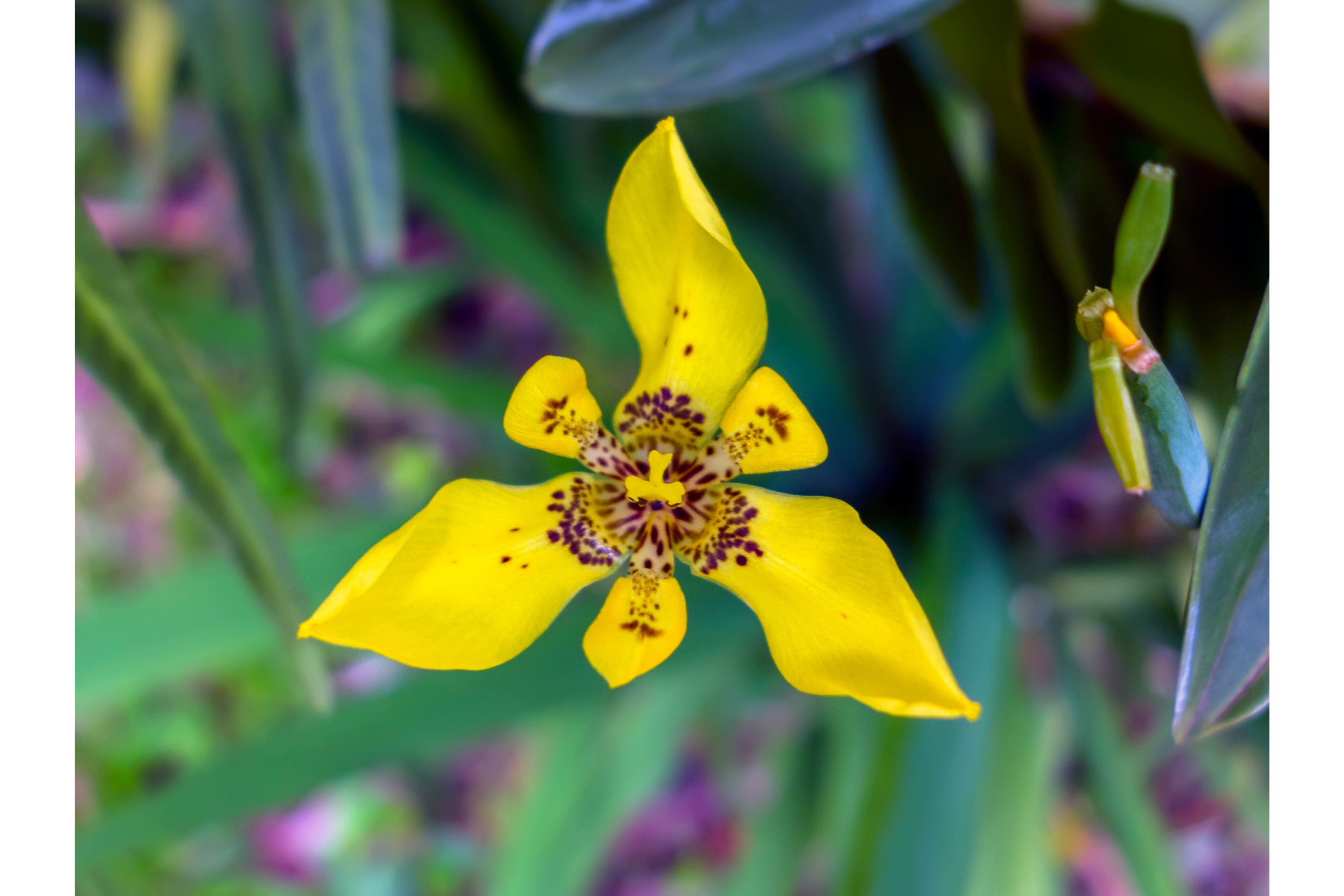Martinique trimezia
(Trimezia martinicensis)

Description
Trimezia martinicensis is a species of bulbous plant in the family Iridaceae. Originally from South America and the West Indies, it is now widely naturalized throughout the tropics. Common names include Martinique trimezia, yellow walking iris and forenoon yellow flag. Trimezia martinicensis is closely related to T. steyermarkii, with which it has been widely confused. Clive Innes describes T. martinicensis as having a brown mark at the base of each outer tepal, whereas T. steyermarkii has brownish-purple bands. In Kubitzki & Huber (1998), the flowers of T. martinicensis are shown as opening less widely than those of T. steyermarkii. The inner tepals of both species are S-shaped in cross-section; those of T. martinicensis are more-or-less upright (Innes describes them as "folded inwards"), whereas those of T. steyermarkii bend outwards into a more elongated shape so that the top of the S is not visible from above. A diagnostic feature is that the style crests of T. martinicensis are short, whereas those of T. steyermarkii are longer, about 3–4 mm (0.12–0.16 in) long, comparable in length to its anthers, which are about 4 mm (0.16 in) long. Another difference is that the leaves of T. martinicensis are narrower, only about 1.3 cm (0.5 in) wide, whereas those of T. steyermarkii are 2.5–3.4 cm (1.0–1.3 in) wide. Trimezia is a genus of flowering plants in the family Iridaceae, native to the warmer parts of southern Mexico, Central America, South America, Florida, and the West Indies. Trimezia is placed in the tribe Trimezieae. The division of the tribe into genera has varied considerably. In one approach, it contains only the genus Trimezia, which then includes the genera Neomarica, Pseudotrimezia and Pseudiris. In other approaches, two to five genera are recognized, sometimes also including the genus Deluciris. The English names walking iris, apostle's iris and apostle plant have been used for many species, regardless of the generic placement (e.g. for Trimezia gracilis, syn. Neomarica gracilis). New plantlets form at the end of the flower spikes; after flowering, the spikes fall over and a new plant grows, so the plant "walks". Names including "apostle" refer to the incorrect belief that plants do not flower until 12 or more leaves are present. The rootstock is variously described as an elongated corm or a rhizome.
Taxonomic tree:







